Prices in Different Metro Cities
Key Highlights
-
Displacement1,043 cc
-
Mileage17 kmpl
-
Top Speed240 Kmph
-
Kerb Weight255 kg
-
Fuel Tank Capacity21 litres
-
Seat Height840 mm
Latest on Kawasaki Versys 1000
- Kawasaki Versys 1000 Motors announced the base variant’s price from 9.5 lakhs to 13 lakhs for the top variant.
- Kawasaki Motors has added more engine refinement and worked on the back suspension for easy riding.
Introduction of Kawasaki Versys 1000
The Kawasaki Versys 1000, a dual-sport motorcycle made by Kawasaki in 2012, is a mix of the terms versatile system. The model is Kawasaki’s most prominent member.
The all-new Kawasaki Versys 1000 launched in 2022 allows riders to ride the bike with an entirely pleasurable feeling, allows the rider to travel for long distances, and helps them off-road and ride their bikes on rough roads and hilly roads areas.
The bike has an updated suspension and a refined engine which helps the bike to give good outputs to the riders.
What's New in the Latest Model of Kawasaki Versys 1000
- Twin LED headlamps
- High-class instrumentation
- Adjustable windscreen
- Radial-mounted front brakes callipers
- KIBS (Kawasaki Intelligent anti-lock Brake System)
- KTRC (Kawasaki Traction Control)
- KCMF (Kawasaki Cornering Management Function)
- Upright Riding position
- Assist and Slipper Clutch
- Electronic Throttle Valves
- Exciting Inline four engine
Highlights of Kawasaki Versys 1000
Design of Kawasaki Versys 1000
Starting with the aesthetic looks, the Kawasaki Versys 1000 provides a very attractive look, a hulky body with a glossy green and black colour scheme. The forward cowling gives the bike a less extreme and angular design. The main attractive part of the bike is the two LED headlamp which has a straight triangular and classy structure giving visibility to the rider for long distance and will help the bikers to drive the bike in the dark as well.
Talking about the seat, Kawasaki has enhanced the quality of the seat and has increased the area for comfort for the riders and the pillions, which will help the rider to ride the bike for long distances without getting tired.
The adjustable windscreen on the Kawasaki Versys 1000 may be adjusted to the rider’s taste, adding to the additional wind protection provided by the revised front cowl and broader shrouds. The rider’s seat now makes it simple to change the windscreen height. Kawasaki Versys 1000 has a brand-new single-sided muffler with and fresh appearance.
Colour and Variant of Kawasaki Versys 1000
Kawasaki Versys 1000 will be available in a single colour variant:
- Candy Lime Green
Kawasaki Versys 1000 will be available in three different variants:
- The base Versay 1000
- The Versay 1000 S
- The Versay 1000 SX
Engine of the Kawasaki Versys 1000
Kawasaki Versys 1000 has a 1,043cc inline with four cylinders liquid-cooled engine, which produces a power of 120hp at 9,000rpm and 102Nm torque at 7,500rpm.
Features of Kawasaki Versys 1000
The bike’s cockpit has brand-new instruments with cutting-edge, high-tech designs that give it a very upscale appearance. A full digital LCD panel complements the analogue tachometer.
The Kawasaki Versys 1000 now comes equipped with Kawasaki’s supersport-grade high-precision brake management system as standard. The updated programme and settings accommodate the bike’s long-travel suspension and street performance parameters.
The bike intends for off-road use because of its long-travel suspension’s ability to handle less-than-ideal street conditions. It can maintain composure when other bikes with stiffer, sportier setups would have to ease off the gas. Front and back 17 lightweight wheels aid in rapid, dynamic handling.
Transmission, Suspension, and Brakes of Kawasaki Versys 1000
Kawasaki Motors offers the rider Liquid-cooled, 4-stroke, 1,043 cc engine with six-speed gear transmission to the bike.
Kawasaki Versys 1000 provides a 43mm inverted fork with rebound damping and an adjustability of 150mm in the front suspension. It has a horizontal back-link, gas-charged, with rebound damping and remote spring preload adjustability of 152mm in the rear suspension.
Talking about the brakes, the riders with dual channel ABS with a front disc of 310mm and a rear disc of 250 mm with front-4 piston and rear single-piston calliper.
Pros and Cons of Kawasaki Versys 1000
Pros
- Smooth Engine
- Excellent Seating Comfort
- Equipped with an Adjustable Windscreen
- Sharp Looks
- Deliberate Viewpoint
- Standard Riding Quality
Cons
- Quite Heavy
- High Seat Height
- Lack of Electronics
Specifications & Features
Power & Performance
-
Fuel TypePetrol
-
Max Power118.27 bhp @ 9,000 rpm
-
Max Torque102 Nm @ 7,500 rpm
-
Emission StandardBS-VI
-
Displacement1,043 cc
-
Cylinders4
-
Bore77 mm
-
Stroke56 mm
-
Valves Per Cylinder4
-
Compression Ratio10.3:1
-
IgnitionDigital
-
Spark Plugs1 Per Cylinder
-
Cooling SystemLiquid Cooled
-
Transmission6 Speed Manual
-
Transmission TypeChain Drive
-
Gear Shifting Pattern1 Down 5 Up
-
ClutchWet multi-disc
-
Fuel Delivery SystemFuel Injection
-
Fuel Tank Capacity21 litres
-
Reserve Fuel Capacity3.2 litres
-
Riding Range315 km
-
Mileage - ARAI17 kmpl
-
Mileage - Owner Reported10 Kmpl
-
Top Speed240 Kmph
-
Engine TypeLiquid-cooled, 4-stroke In-Line Four
Brakes, Wheels & Suspension
-
Braking SystemDual Channel ABS
-
Front Brake TypeDisc
-
Front Brake Size310 mm
-
Rear Brake TypeDisc
-
Rear Brake Size250 mm
-
Calliper TypeFront - 4 Piston, Rear - Single Piston Calliper
-
Wheel TypeAlloy
-
Front Wheel Size17 inch
-
Rear Wheel Size17 inch
-
Front Tyre Size120/70 - ZR17
-
Rear Tyre Size180/55 - ZR17
-
Tyre TypeTubeless
-
Radial TyresYes
-
Front Tyre Pressure (Rider)32 psi
-
Rear Tyre Pressure (Rider)36 psi
-
Front Tyre Pressure (Rider & Pillion)36 psi
-
Rear Tyre Pressure (Rider & Pillion)40 psi
-
Front Suspensionø43 mm inverted fork with rebound damping (right-side) and spring preload adjustability / 150 mm
-
Rear SuspensionHorizontal Back-link, gas-charged, with rebound damping and remote spring preload adjustability / 152 mm
Dimensions & Chassis
-
Kerb Weight255 kg
-
Overall Length2,270 mm
-
Overall Width895 mm
-
Overall Height1,400 mm
-
Wheelbase1,520 mm
-
Ground Clearance150 mm
-
Seat Height840 mm
-
Chassis TypeTwin-tube, aluminium
Manufacturer Warranty
-
Standard Warranty (Year)2 Year
-
Standard Warranty (Kilometers)30000 Kilometers
Features
-
OdometerDigital
-
DRLs (Daytime running lights)Yes
-
Mobile App ConnectivityYes
-
USB charging portNo
-
Front storage boxNo
-
Under seat storageNo
-
AHO (Automatic Headlight On)Yes
-
SpeedometerDigital
-
Fuel GuageYes
-
TachometerAnalogue
-
Stand AlarmYes
-
Stepped SeatYes
-
No. of Tripmeters2
-
Tripmeter TypeDigital
-
Low Fuel IndicatorYes
-
Low Oil IndicatorYes
-
Pillion BackrestNo
-
Pillion GrabrailYes
-
Pillion SeatYes
-
Pillion FootrestYes
-
Digital Fuel GuageYes
-
Start TypeElectric Start
-
Shift LightYes
-
KillswitchYes
-
ClockYes
-
BatteryMaintenance Free
-
Headlight TypeLED
-
Brake/Tail LightLED
-
Turn SignalYes
-
Pass LightYes
-
Additional features--
Expert Reviews
The bike’s speed might be compelling in the category. The design look’s also very Gorgeous.
The company provides Kawasaki Versys 1000 with a powerful machine with a horsepower of 118hp.
Kawasaki has developed one of the most cutting-edge and well-balanced bikes in terms of performance, comfort, and efficiency, with this powerful engine at its core, prioritising everyday usage for various street-riding circumstances.
The braking system and the suspension are also very decent and reliable for the riders.
Top 3 Competitors of Kawasaki Versys 1000
Kawasaki Versys 1000 vs Triumph Tiger 900
The base model of the Kawasaki Versys 1000 costs 12.19 Lakh, while the Triumph Tiger 900 starts at 13.70 Lakh, costing 1.51 Lakh more.
The reported distance technically speaking, the Triumph Tiger 900 is powered by an 888 cc engine, while the Kawasaki Versys 1000 has a 1043 cc engine.
The power generated by Kawasaki Versys 1000 is 120 PS @9000 rpm and the maximum torque transferred by the engine is 102 Nm @7500 rpm. In contrast, the power generated by Triumph Tiger 900 is 95.2 PS @8750 rpm and the torque transferred by the engine is 87 Nm @7250 rpm.
While the Triumph Tiger 900 comes in nine colours, the Kawasaki Versys 1000 comes in just one.
The total number of cylinders in the Kawasaki Versys 1000 is 4, with four valves per cylinder. In contrast, the total number of cylinders in the Triumph Tiger 900 is only 3, with four cylinders per valve.
Kawasaki Versys 1000 vs BMW R 1250 GS
The BMW R 1250 GS is around 2130000 (ex-showroom price), whereas the Kawasaki Versys 1000 is 1219000. (ex-showroom).
The BMW R 1250 GS’s engine produces 136 PS and 143 Nm, and Versys 1000, on the other hand, has a power and torque rating of 120 PS and 102 Nm, respectively.
Compared to the Kawasaki Versys 1000, BMW R 1250 GS offers the bike in 4 different colours.
The total number of cylinders in the Kawasaki Versys 1000 is four, allowing the engine to generate a power of 120 PS @9000 rpm and torque of 102 NM @7250 rpm. In contrast, the total cylinder present in the BMW R1250 GS is 2, which transfers the power to the engine of 134 bhp @7750 rpm and torque of 143 NM @6250 rpm.
Kawasaki Versys 1000 vs BMW F 850 GS
The base model of the Kawasaki Versys 1000 is 12.19 Lakh, while the BMW F 850 GS is 12.50 lakhs.
The Kawasaki Versys 1000 has a fuel capacity of 21 litres, and the Kawasaki claims the mileage is ten kmpl, whereas the BMW F 850 GS has a fuel tank capacity of 15, and the claimed mileage is 24.4 kmpl.
The weight of the Kawasaki Versys 1000 is 255 kg, whereas the BMW F 850 GS is only 233 kg.
Both bikes come in a single-colour option.
BMW F 850 GS gives an approximate mileage of 24.4 Kmpl, and the Versys 1000 gives a mileage of approximately 10 Kmpl.
Conclusion
The Kawasaki Versys 1000 redefines the term as an adventure bike built for road-going journeys, and it succeeds in this regard. This bike costs less than other 1000cc-plus adventure machines at 12 lakh.
You can’t say the same about some of the beauties with which it competes because it lacks the power, comfort, and two-up touring capability to guarantee a long and happy relationship.
FAQs
What is the on-road price for Kawasaki Versys 1000 in 2022?
The 2022 on-road price of the Kawasaki Versys 1000 in Delhi is 13,76,171.
What are the colour options of the Kawasaki Versys 1000?
Kawasaki Versys 1000 has only one colour, Candy Lime Green.
What are the key specifications of the Kawasaki Versys 1000?
Kawasaki Versys 1000 is a superbike weighing 255 kg and has a 1043 cc BS-VI engine with 21 fuel capacity.
What is the weight of the Kawasaki Versys 1000?
Versys 1000 weighs around 255 kg.
Latest From Our Blog
© 2024 Riders Rally. All rights reserved. Design & Developed by Saman Technosys.
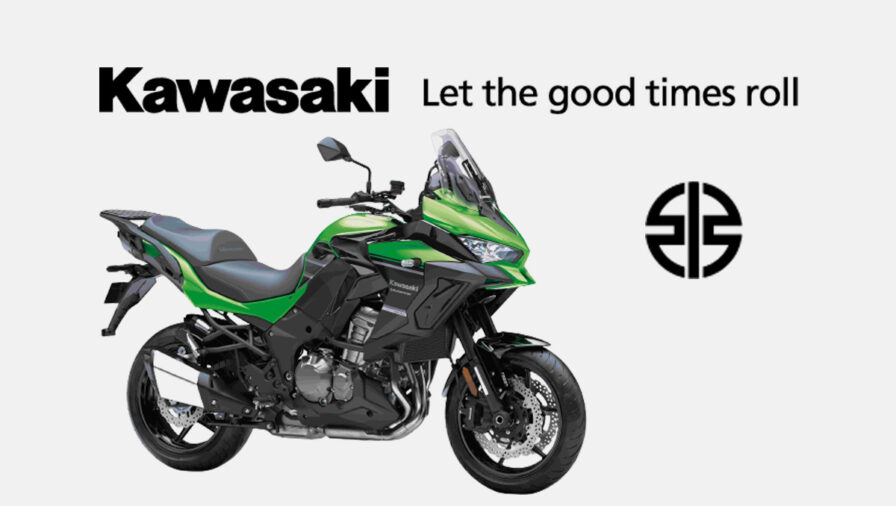
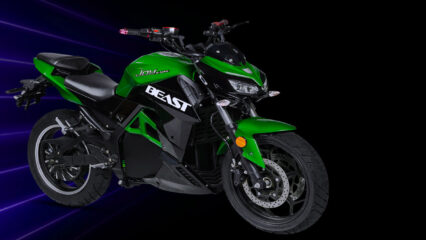
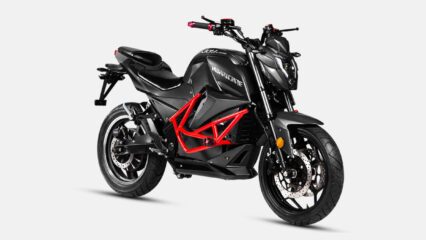
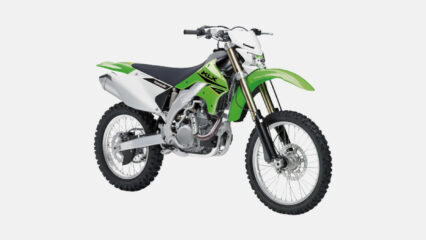


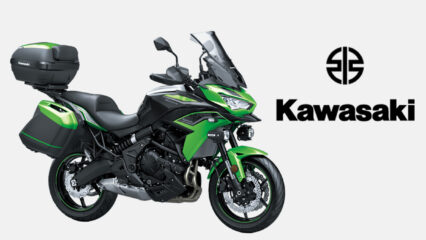
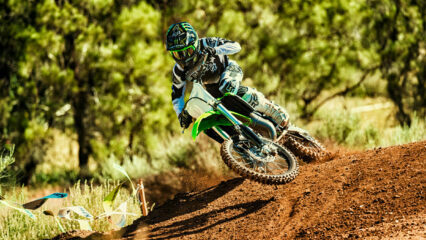
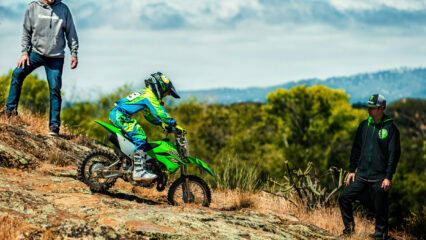
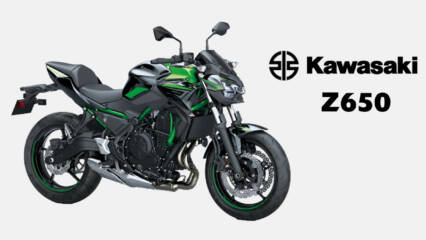
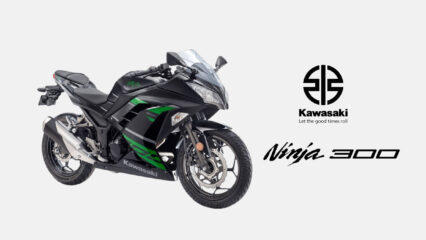
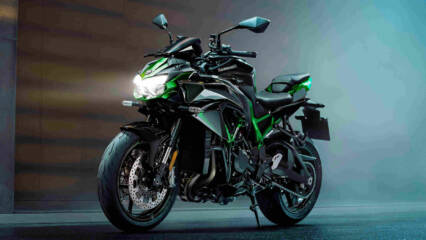

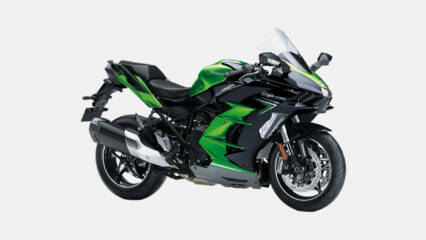
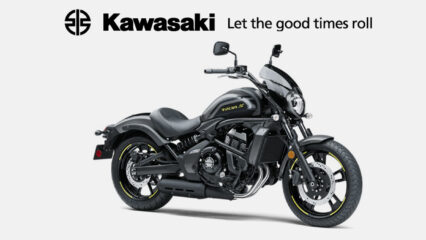
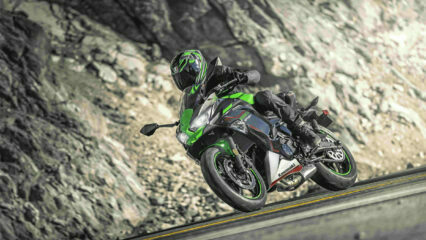
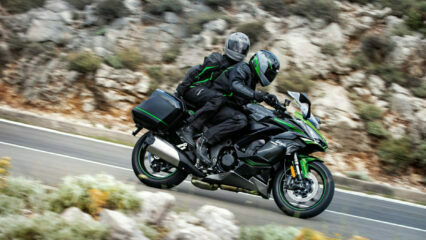
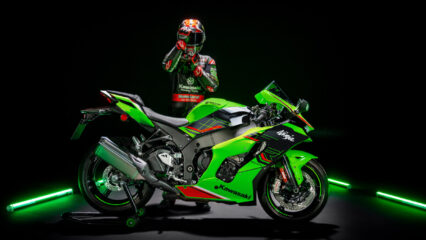
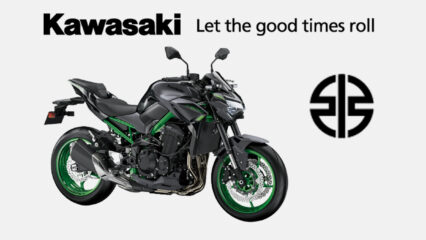
![8 Upcoming Adventure Bikes in India [year] 20 Riders Rally](https://ridersrally.in/wp-content/uploads/2022/12/upcoming-adventure-bikes-in-india_blogimage1-426x240.jpg)
![10 Best 250cc Bikes In India [year]—The Ones with Best Powers 21 Riders Rally](https://ridersrally.in/wp-content/uploads/2022/11/best-250cc-bikes-in-india_blogimage-426x240.jpg)
![Exploring the Range of Best 100cc Bikes in India [year] 22 Exploring the Range of Best 100cc Bikes in India 2024](https://ridersrally.in/wp-content/uploads/2022/11/best-100cc-bikes-in-india_blogimage-426x240.jpg)

![15 Best Bikes Under 5 Lakhs in India [year] 24 Riders Rally](https://ridersrally.in/wp-content/uploads/2022/11/best-bikes-under-5-lakhs_blogimage_up-426x240.jpg)
![11 New Bikes Model in India [year] 25 Riders Rally](https://ridersrally.in/wp-content/uploads/2022/01/new-model-bikes-7-top-launches-of-2021_blogimage-1-426x240.jpg)
![12 Best Bikes under 70000 in India [year] 26 Riders Rally](https://ridersrally.in/wp-content/uploads/2022/01/bikes-under-70000-12-bikes-that-made-the-cut_blogimage-1-426x240.jpg)
![11 Best 200cc Bikes in India [year] 27 Riders Rally](https://ridersrally.in/wp-content/uploads/2022/01/best-200cc-bike-in-india-everything-from-apache-to-xtreme_blogimage-426x240.jpg)